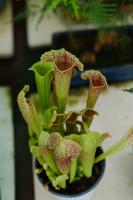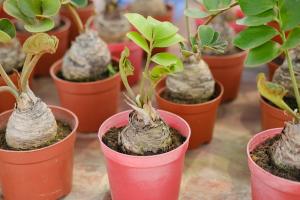How to Water Plants Overhead
Watering is a crucial aspect of plant care, as it helps to nourish and sustain plants. Overhead watering is a method that involves evenly distributing water over plants from above. This method is especially useful for plants that require frequent watering or have a large foliage area. Here are some tips on how to water plants overhead.
Choose the Right Time
The best time to water plants overhead is early in the morning or late in the evening when the sun is not too hot. This is because watering during the heat of the day can cause water to evaporate before it penetrates the soil, leaving plants dry and thirsty.
Use the Right Tools
A watering can or a hose equipped with a wand attachment are useful tools for overhead watering. The watering can is ideal for small to medium-sized plants, while the wand attachment on a hose is better suited for larger plants or plants in hard-to-reach areas. Choose a watering tool with a fine spray option to ensure that water is dispersed evenly over the plant, preventing damage to the foliage.
Take Care with Water Pressure
When watering plants overhead, it is important to be cautious with water pressure. High pressure can damage the plant's foliage or dislodge soil, while low pressure can result in uneven watering. Adjust the water pressure to a level that is gentle, yet sufficient to reach all areas of the plant. Do not hold the wand too close to the plant, as this can cause water to pool and damage the foliage.
Water the Soil, Not the Foliage
While overhead watering is great for nourishing plants, it is important to avoid watering the foliage too much as it can promote the growth of fungal diseases. Instead, direct the water towards the soil, trying to keep the foliage as dry as possible. If you do need to water the foliage, do it in the early morning or late afternoon so that it has time to dry before nightfall.
Know Your Plants' Watering Needs
Different plants have different watering needs. Some plants prefer dry soil, while others require constant moisture. Be sure to research your plants' watering needs and adjust your watering schedule accordingly. Overwatering can be just as detrimental as under watering.
Conclusion
Overhead watering is an effective way to care for your plants, provided you do it correctly. By choosing the right time, using the right tools, being careful with water pressure, avoiding watering the foliage too much, and knowing your plants' watering needs, you can ensure that your plants thrive and flourish, helping you create a healthy garden environment.

 how many times do yo...
how many times do yo... how many planted tre...
how many planted tre... how many pine trees ...
how many pine trees ... how many pecan trees...
how many pecan trees... how many plants comp...
how many plants comp... how many plants can ...
how many plants can ... how many plants and ...
how many plants and ... how many pepper plan...
how many pepper plan...




























